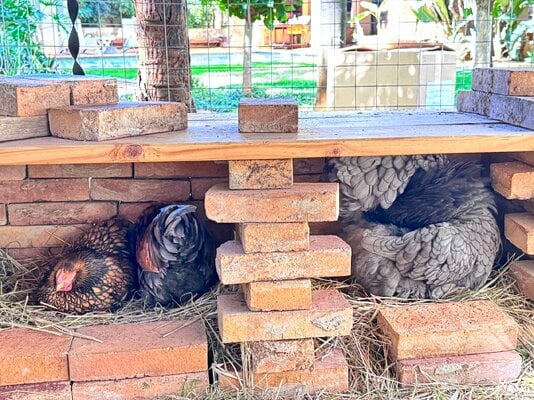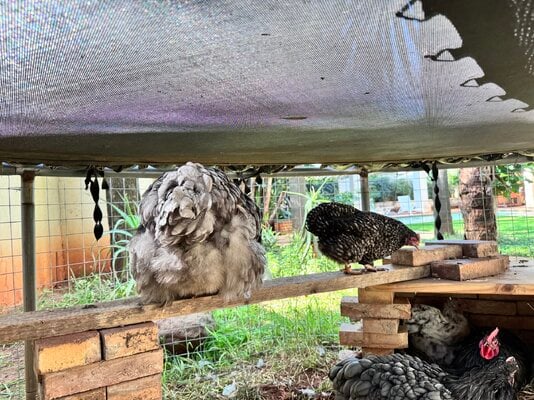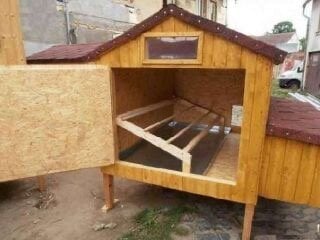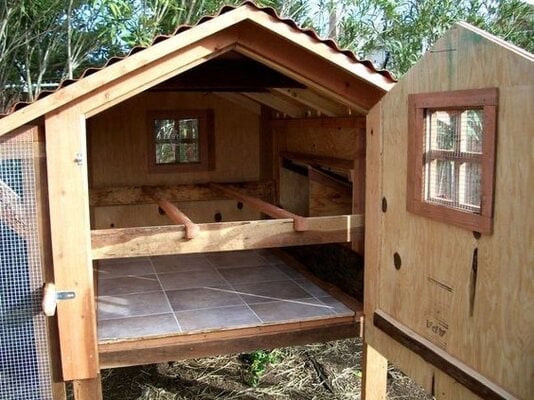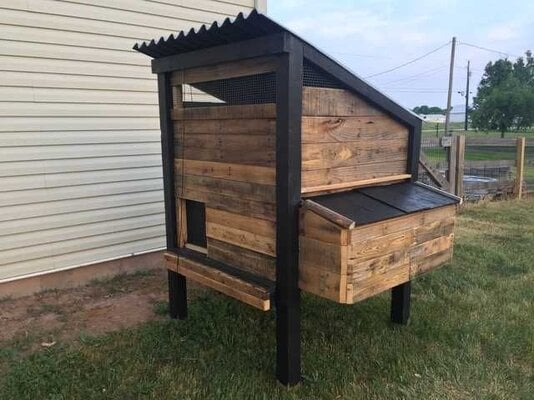StefneyRSA
In the Brooder
Why do my Orpingtons (bantam and regular) prefer to huddle up on the floor at night instead of roosting on their perch?
I’m busy drawing up plans for a luxurious coop for them to sleep in (this will be inside of a very big catio-inspired run/enclosure/aviary in my backyard). They’ve been in a temporary enclosure underneath the trampoline for the two weeks I’ve had them, and they never use their nesting boxes or roosting perch at night.
I’ve seen other chickens roost at night, but mine just pile up on the floor. Is that normal for this breed? The perch is about 2inches wide and solid wood, about 3 feet off the floor. During the day some of them will nap on the perch, and they love their nesting boxes in the daytime. But as soon as the sun starts to set they all run and huddle together for bedtime.
• When I build the coop, what would you recommend for them specifically?
I was planning on having several roosting perches, in addition to nesting boxes, with a mesh floor under the perches for droppings to fall through.. but will they ever sleep on roosting poles in the coop?
•Also, should I have smaller individual nest boxes or communal boxes that fit more than one chicken? At the moment their temporary boxes are rather large, and we only have two boxes for the 6 chickens, they seem to love cuddling up in there together for afternoon naps, they’re hardly in there one at a time. Will this change when they start laying?
Please share your Orpington’s sleeping habbits and pictures of coops. I need inspiration
*pics in comments of them preparing for their evening snooze in a fluffy floor pile. As well as their temporary nests for naps, and ideas for the coop I’d like to build (but now second guessing.)
I’m busy drawing up plans for a luxurious coop for them to sleep in (this will be inside of a very big catio-inspired run/enclosure/aviary in my backyard). They’ve been in a temporary enclosure underneath the trampoline for the two weeks I’ve had them, and they never use their nesting boxes or roosting perch at night.
I’ve seen other chickens roost at night, but mine just pile up on the floor. Is that normal for this breed? The perch is about 2inches wide and solid wood, about 3 feet off the floor. During the day some of them will nap on the perch, and they love their nesting boxes in the daytime. But as soon as the sun starts to set they all run and huddle together for bedtime.
• When I build the coop, what would you recommend for them specifically?
I was planning on having several roosting perches, in addition to nesting boxes, with a mesh floor under the perches for droppings to fall through.. but will they ever sleep on roosting poles in the coop?
•Also, should I have smaller individual nest boxes or communal boxes that fit more than one chicken? At the moment their temporary boxes are rather large, and we only have two boxes for the 6 chickens, they seem to love cuddling up in there together for afternoon naps, they’re hardly in there one at a time. Will this change when they start laying?
Please share your Orpington’s sleeping habbits and pictures of coops. I need inspiration
*pics in comments of them preparing for their evening snooze in a fluffy floor pile. As well as their temporary nests for naps, and ideas for the coop I’d like to build (but now second guessing.)

